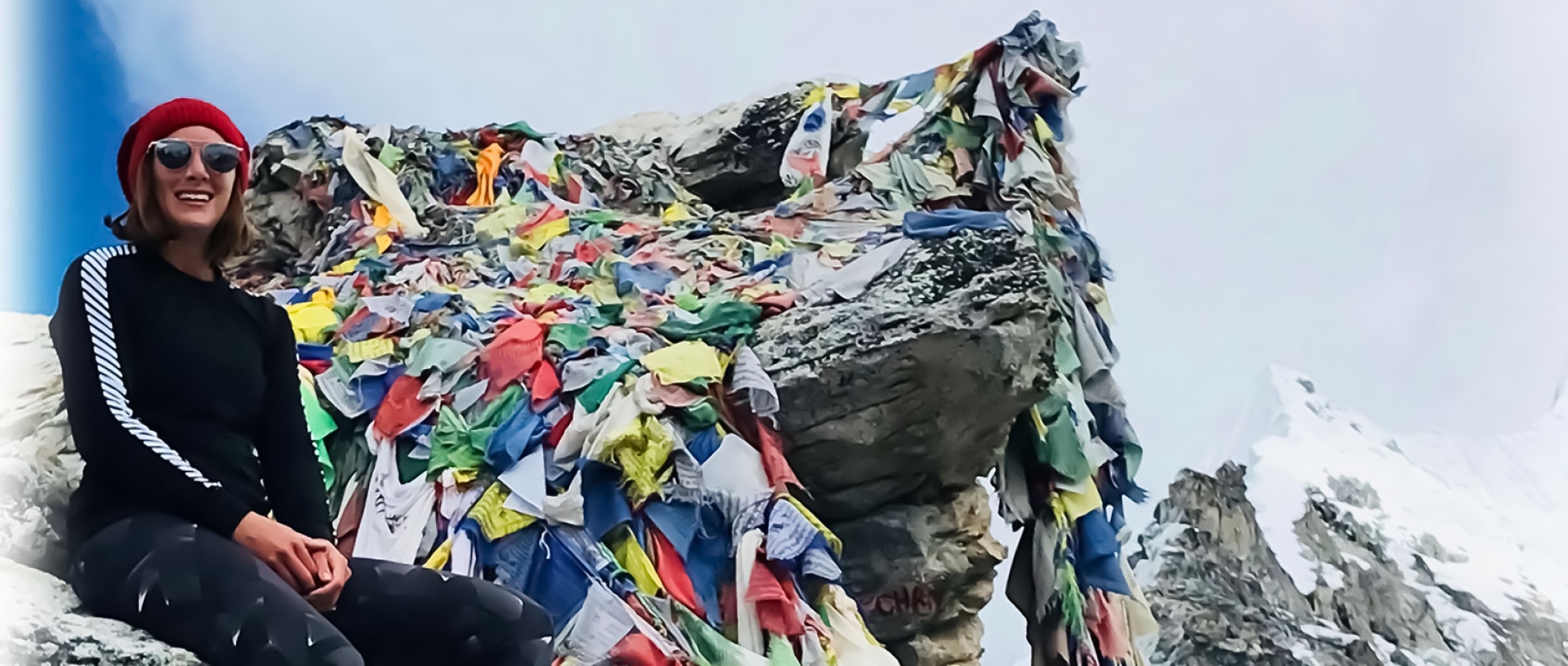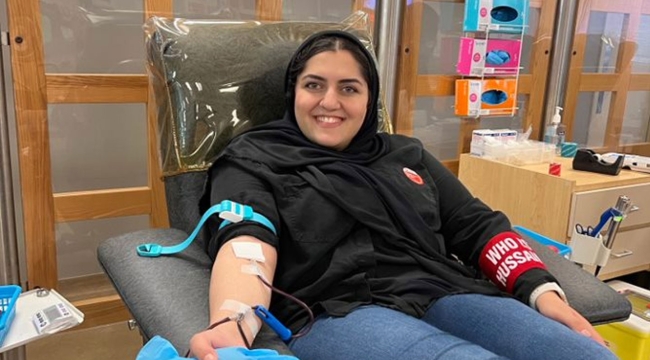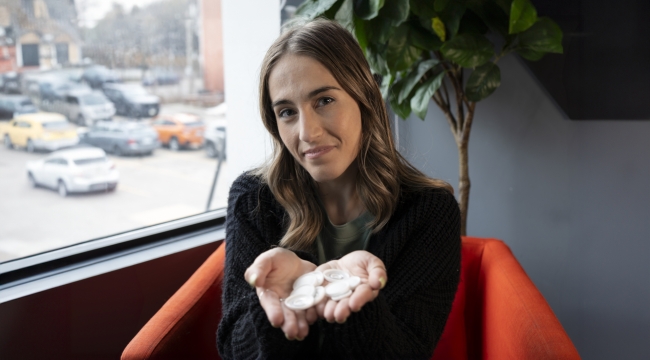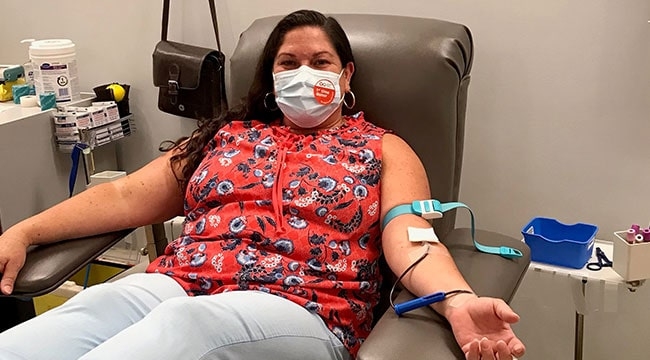World traveller driven to donate
Tracey Evans conquered a fear of needles to become a living liver donor and a blood donor
From a young age, Tracey Evans had some big goals for her future.
One was to land a career that would take her to countries around the world. As the well-travelled child of parents who worked in the airline industry, it was a logical fit. A second goal was even more ambitious.
“I’ve always had this idea that in some way, shape or form, I wanted to save a life,” said Tracey, 29. “I wanted to save a human life.”
At one point Tracey thought she might satisfy both desires by working on the front lines of international relief efforts. But her career took a different turn. Instead of delivering humanitarian aid, she travels the world to manage education projects for an international development organization.
“So then I think I started exploring, is there another way that I can literally save a life? And I found organ donation,” said Tracey. “And to me, it just made so much sense.”
Organ and tissue donation and transplantation in Canada
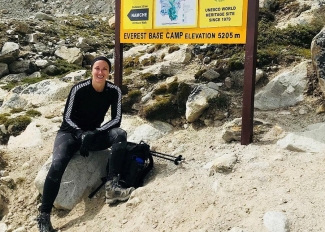
Frequent traveller Tracey Evans trekked with her father to Everest Base Camp in Nepal in 2018. The picture at the top of this article shows Tracey on that same Mt. Everest adventure.
In 2016, Tracey applied to donate one of her kidneys anonymously. In many instances, people require only one kidney for the body to function properly, so it’s possible to be a living donor.
Unfortunately, physicians feared Tracey couldn’t spare one of hers after initial tests showed an elevated risk of future kidney problems.
“This news was devastating,” Tracey shared with friends on social media. “I wanted to help save a life so badly, and felt it was something I was destined to do, but medical science was telling me I wasn’t the right fit.”
Tracey took time to recover from the disappointment, but she didn’t give up. She later applied to donate part of her liver. Healthy adults require extensive medical testing, but those who meet the requirements can safely have surgery to remove as much as one half of their liver for a recipient in need.
This time, Tracey was thrilled to qualify.
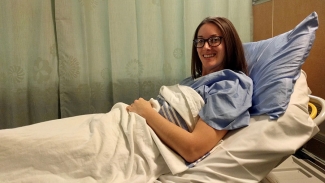
Tracey Evans prepares for surgery to remove a part of her liver. As a living liver donor, she helped save the life of a child.
At times the journey was an emotional rollercoaster. Tracey’s first surgery was cancelled just 12 hours before her operation was scheduled to take place. She’d known that this could happen if the patient became too ill for transplant, but it was still heartbreaking.
The donation did go ahead weeks later. Tracey describes it as both enriching and humbling. The scar across her stomach serves as a powerful reminder of both her experience as a donor and the child she helped. Even now, she doesn’t know if the child who ultimately received her liver is the same child whose transplant was cancelled previously.
“Complete anonymity is what I signed up for,” Tracey said. “I’m at peace with knowing that my liver went to the person who needed it most and that the surgery went well.”
‘I had to confront my fear of needles head-on’
While Tracey didn’t waver in her commitment to donate an organ, she wasn’t entirely at peace every step of the way.
“I had to confront my fear of needles head-on, time after time,” Tracey said.
Previous attempts to confront that fear had failed. One of them was at a Canadian Blood Services booth on her university campus in 2009.
“They were offering to tell you your blood type by having your finger pricked and drawing the tiniest sample of blood,” Tracey recalled. “While waiting my turn in line, I fainted at the mere sight of the person in front of me being pricked.”
Focusing on the fact she could save a life helped Tracey cope with that fear during the organ donation process.
“There was no needle phobia in the world that wasn’t worth confronting to remove my liver and give it to someone else,” Tracey said.
And when needles came out, she also drew on a powerful source of comfort: photos of her sister’s golden retriever, Hudson.
“I was always looking at his picture as a happy distraction,” Tracey said.
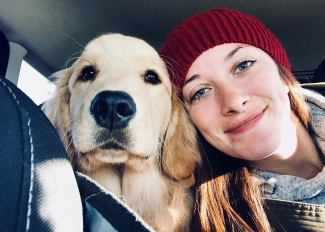
Photos of her sister’s beloved golden retriever Hudson helped Tracey Evans confront a fear of needles while she went through the process of donating a part of her liver.
Another opportunity to give
Fast forward to spring 2020, and Tracey is living through the pandemic in Ottawa. Her international travel has been curtailed. But she quickly discovered a silver lining: she was eligible to donate blood.
“I was looking for ways that I could really support my community,” Tracey said. “You’re looking at nurses, you’re looking at frontline workers who are all doing their huge amazing part. And you’re thinking, is staying home the only thing I can do? Or is there maybe something more?”
“To me, donating blood at that time seemed like that something more.”
Donating blood had been difficult for Tracey previously because of her fear of needles as well as her frequent travel. Travellers can be ineligible to donate for an extended period after visiting certain areas, such as countries with higher risk of malaria.
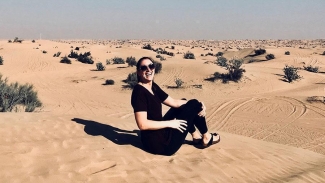
Frequent travel, such as to areas with higher risk of malaria, has made it difficult for Tracey Evans to donate blood. But she recently donated blood for the first time, after donating a portion of her liver.
Tracey is still anxious about needles, so she prepared for her first blood donation appointment by reading up on the donation process. She opted to donate at the same time as a friend for extra support. And she also drew motivation from things she learned as an organ donor.
“Organ recipients need blood immensely,” said Tracey. “It’s almost not enough to just give the organ. There’s so much more that needs to be there to support that transplant, including blood donations.”
Tracey describes waking up on the morning of her appointment “excited, energized and inspired.” After a smooth donation experience, she’s eager to go back. She estimates she could fit in at least two more appointments before her next international trip.
“I don’t have tattoos, but I’m told they’re addictive. Many say that once you get one, you just want to keep going back for more,” Tracey said. “Having now successfully completed my first donation, I can honestly say that that’s how I feel about blood donation. I’m already counting down the days until I can go back for round number two.”
